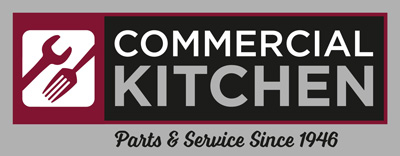The Value of OEM Parts
By Bill Leader, Sales Manager
Original equipment manufacturer (OEM) parts are, perhaps, the best option for individuals and companies who need to make repairs. Unfortunately, given the unplanned nature of failure on important pieces of equipment (especially in commercial kitchens), managers and service companies will often opt to take the quicker route of using generic parts for the repairs that need to be made. The utilization of OEM parts not only increases return on investment (ROI), but it also reduces liabilities and the chance of future failure of the equipment in which it is being installed.
Cost wise, OEM parts are not the cheapest thing you can get. However, as the old adage goes, you get what you pay for. There is an inherent pressure on owners and managers to see a reduction in their operational costs, and that pressure often leads to corners being cut. The first corner that gets cut, in many cases, is replacing broken parts with generics rather than OEM parts. Though going OEM can be a bit more expensive up front, it brings value to the table in terms of reduced liability and by alleviating future risk of failure. OEM parts are warrantied and must go through quality control (QC) checks to ensure proper functionality.
There are additional risks with generic parts that do not make themselves readily apparent. On the outside, the parts may look exactly the same, but on the inside, there could be faults or cheaper components used. This could lead to problems with other parts of the system, including negative effects on related parts. The system failures that could potentially result from those effects are simply not worth the risk. Generics bring that inherent liability any time they are installed. This is not to say they are never an option, but it does mean that they should be considered a backup option at best.
ROI is typically the first thing people look at when they are determining how to proceed with business decisions (especially when it comes to parts or equipment). Unfortunately, many do not look past the initial price tag when determining what to buy. In the long run, OEM parts are the better value and, thus, offer the better ROI. The initial price tag on those OEM parts, which is higher than most generics, is often enough to turn people off of buying them. Those same people are running the risk of future system failures, faulty parts, performance loss, and the potential of a negative impact on ancillary parts.
Ultimately, OEM parts provide the best ‘bang for your buck’. You are getting a warrantied piece of equipment that is guaranteed to work with the equipment it is being used on. Installation is a simpler procedure. The average lifespan of OEM parts is longer, increasing the time between equipment failures. The fact that certifications and warranties remain in place and that risk is lowered is just the icing on the cake. The use of generic parts may be appealing at the outset but considering all of the ancillary factors that play a role in the buying decision, OEM is simply the best way to go.

